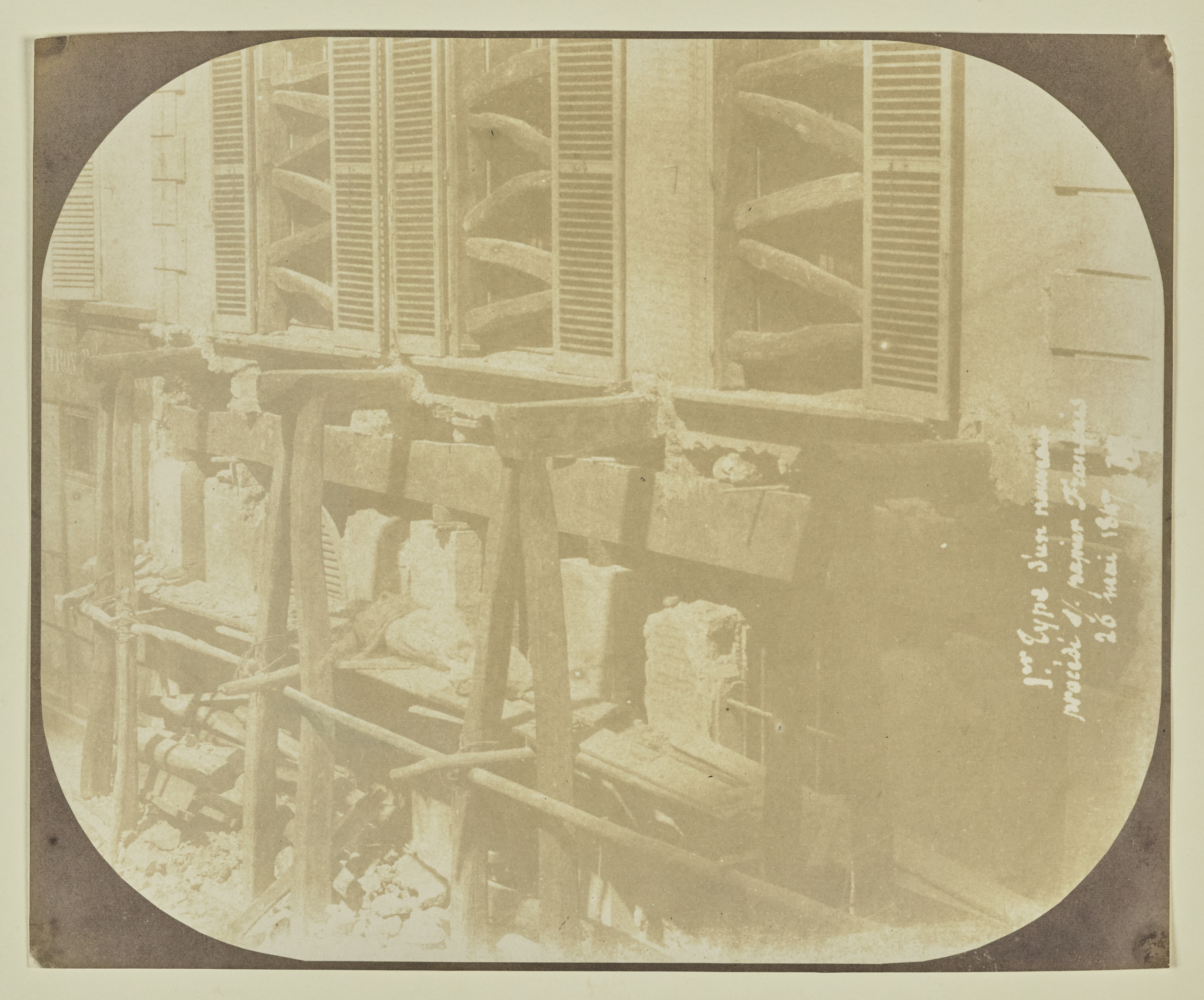Hippolyte Bayard arrived in Paris by early 1825 in the company of his childhood friend Edmond Geffroy. Like many others during the Bourbon Restoration (1814-1830), they left the provinces in search of opportunities in the capital. Geffroy came in pursuit of a career as an actor. While Bayard may have harbored artistic aspirations of his own, he soon went to work at the Ministry of Finance.
By early 1839, Bayard had begun experimenting with light-sensitive chemicals in search of ways to fix an image from nature on paper. He immersed himself in this nascent technology/art form that was soon to be called “photography,” all the while maintaining his job as a bureaucrat.
As the population of Paris continued to grow through the 1830s under King Louis-Philippe, Paris extended its reach beyond the city walls to places like Batignolles-Monceau and Montmartre, resulting in numerous building projects. Many Parisian civil servants, such as Bayard, and eventually artists as well, gravitated toward these more affordable areas. Over the next decade, Bayard documented the transformation of his adopted city with his camera. He made many images right in his own neighborhood of Batignolles-Monceau. In many cases he chose to turn his camera on the quotidian scenes of relatively humble buildings undergoing repair or renovation.1 (See also: 84.XO.968.82).
Bayard took this image from a vantage point above street level (probably from a second floor window across the street) so that the viewer looks down onto the ground level rubble and scaffolding and directly across to the first floor windows. His framing of the composition sets it apart from conventional painted and engraved views of Paris of the period. From such a close perspective, his image focuses on the wood reinforcements protecting the windows and on the evenly spaced scaffolding and buttressing of beams on the lower level. The composition moves toward patterned abstraction. A second image, also found in the Getty Museum’s Bayard Album, shows a broader view of the same building and the street with two construction workers taking a break in the lower part of the composition. (84.XO.968.152)
Though many years into his practice, this photograph was an experiment of sorts. Bayard wrote a note along the right hand edge of the negative that can be translated as “First type of a new process on French paper, 26 May 1847 HB.” He and other photographers consistently worked with different paper looking for their ideal. Paper manufacturers incorporated sizing agents to produce different textures and absorption levels in their papers. The sizing agent could also affect the color of the highlights (from pure white to bright yellow to golden brown) and densities (from light brown to purple) of the final photograph. French paper manufacturers tended to use starch, which produced a brown color in the area of maximum density, while British manufacturers used gelatin, which produced a purple color.2
- Carolyn Peter, J. Paul Getty Museum, Department of Photographs
-
For more information about Bayard’s interest in the changing Parisian landscape see: Nancy Keeler, “Hippolyte Bayard aux origines de la photographie et de la ville moderne,” La Recherche Photographique, no. 2 (May 1987): 6-17. ↩︎
-
See Tania Passafiume, Bayard in Rochester: The Direct Positive Process, (George Eastman House, Advanced Residency Program in Photography Conservation, 2001), section 5. ↩︎
